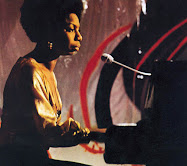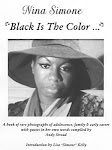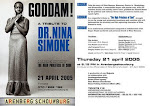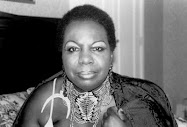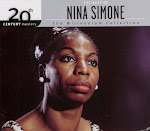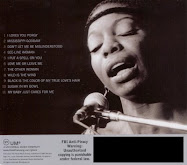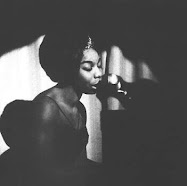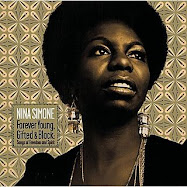Tuesday, November 9, 2021
Clora Bryant
Hailed as a “one-of-a-kind trailblazer, super-swinging, joyful, gifted, creative musical force” by drummer and DIVA Jazz Orchestra leader Sherrie Maricle, who posted a heartfelt Facebook tribute after her death, Bryant inspired countless female jazz players to follow her lead.
Before she staked her claim on Central Avenue, Bryant was a featured soloist in the International Sweethearts of Rhythm and other all-female swing ensembles popular in the 1940s. But she really came into her own in the 1950s at Central Avenue hotspots like The Downbeat, Club Alabam, and the Dunbar Hotel, where she played with Charlie Parker and Billie Holiday and dazzled Gillespie, who mentored Bryant.
Clora Larea Bryant May 30, 1927 – August 25, 2019, was an American jazz trumpeter. She was the only female trumpeter to perform with Dizzy Gillespie and Charlie Parker and was a member of the International Sweethearts of Rhythm.
Bryant was born in Denison, Texas to Charles and Eulila Bryant, the youngest of three children. Her father was a day laborer and her mother was a homemaker who died when Clora was only 3 years old. When Bryant was a young child, she learned to play piano with her brother Mel. As a child, Bryant was a member of the choir in a Baptist church. When her brother Fred joined the military, he left his trumpet, which she learned how to play.
In high school, she played trumpet in the marching band.
Bryant turned down scholarships from Oberlin Conservatory and Bennett College to attend Prairie View College in Houston starting in 1943, where she was a member of the Prairie View Co-eds jazz band. The band toured in Texas and performed at the Apollo Theater in New York City in 1944.
Her father got a job in Los Angeles, and she transferred to UCLA in 1945. Bryant heard bebop for the first time on Central Avenue.
In 1946 she became a member of the International Sweethearts of Rhythm, an all-female jazz band, earned her union card, and dropped out of school. Dizzy Gillespie became her mentor and provided her with work.
She joined the black female jazz band the Queens of Swing as a drummer and went on tour with the band.
In 1951 she worked in Los Angeles as a trumpeter for Josephine Baker and Billie Holiday. Two years later she moved to New York City.
The Queens of Swing performed on television in 1951 as The Hollywood Sepia Tones, in a half-hour variety program on KTLA. They were the first women's jazz group to appear on television. After six weeks the show was dropped due to a lack of a sponsor.
During filming Bryant was about seven months pregnant. After her daughter's birth she was called onto Ada Leonard's all-girl orchestra show; however, she only stayed for a week after calls demanding to "get that nigger off there".
In 1954 she briefly moved to New York because she had lost inspiration from playing in bands.
In 1951, she was a member of an all-female sextet led by Ginger Smock that was broadcast for six weeks on CBS.
“Dizzy always gave me my props,” Bryant recalled, during a 2010 interview at the Central Avenue Jazz Festival. As Gillespie himself put it in Trumpetistically, Clora Bryant, a documentary by Zainabu Davis: “She has the feeling of the trumpet. The feeling, not just the notes.”
Armed with the trumpet mouthpiece Gillespie gave her, Bryant recorded her first and only album as a leader, 1957’s Gal With A Horn. As Mode Records demanded, Bryant also sang on all the tracks. But it’s the bold bebop voice of her trumpet, which explodes with piercing runs, that established her as a serious player.
Still, without an agent or a label contract behind her, Bryant continued to face hurdles as a gal with a horn.
Bryant recorded her first and only album, Gal with a Horn, in 1957 before returning to the life of a traveling musician. She worked often at clubs in Chicago and Denver. In Las Vegas she performed with Louis Armstrong and Harry James. She toured with singer Billy Williams and accompanied him on The Ed Sullivan Show.
During the 1960s and 1970s, she toured around the world with her brother Mel, who was a singer, and they had a TV show in Australia. In 1989 Bryant became the first female jazz musician to tour in the Soviet Union after writing to Mikhail Gorbachev.
After a heart attack and quadruple bypass surgery in 1996, Bryant was forced to give up the trumpet but she continued to sing. She also began to give lectures on college campuses about the history of jazz, co-edited a book on jazz history in Los Angeles titled Central Avenue Sounds: Jazz in Los Angeles, and worked with children in Los Angeles elementary schools.
In 2002, she received a lifetime achievement award (the Mary Lou Williams Women in Jazz Award) from the Kennedy Center in Washington, D.C. Two years later a documentary about her was released.
In an interview with JazzTimes, Bryant said, "Nobody ever told me, 'You can't play the trumpet, you're a girl.' Not when I got started in high school and not when I came out to L.A. My father told me, 'It's going to be a challenge, but if you're going to do it, I'm behind you all the way.' And he was."
Clora Bryant /Gal With A Horn 1957
Clora Bryant (Trumpetiste) - Interview - Ladies Behind the Beat.TV
Little Girl Blue · Clora Bryant
Clora Bryant (1), Vienne (F) 1987 - Trumpet Legends
https://www.nytimes.com/2019/09/01/arts/music/clora-bryant-dead.html
https://en.wikipedia.org/wiki/Clora_Bryant
https://downbeat.com/news/detail/in-memoriam-clora-bryant-1927-2019
Subscribe to:
Comments (Atom)



































